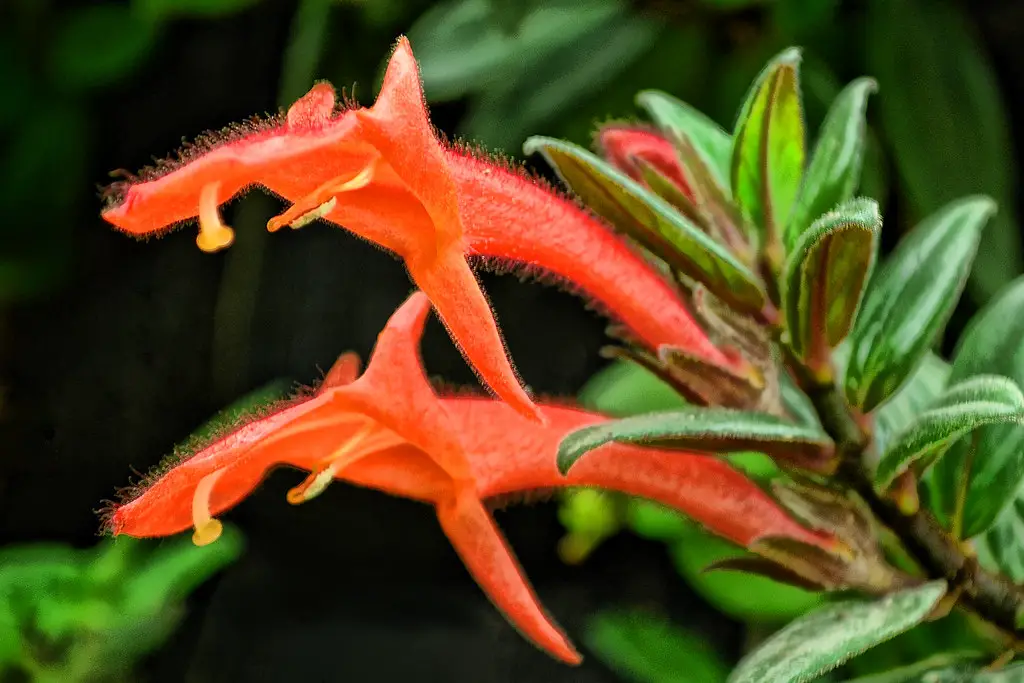The Goldfish Plant, with its quirky, distinctive flowers resembling tiny goldfish, is a captivating addition to any indoor space. Its blooms, which are usually orange but can also be found in red, yellow, and other shades, are where it gets its common name. These fascinating blossoms emerge from dark, shiny leaves that form a lush background, highlighting the unusual form of the flowers.
Belonging to the genus Columnea, the Goldfish Plant is native to Central and South America, where it grows as an epiphyte in tropical rainforests. This exotic plant’s trailing nature and brilliant blooms make it an appealing option for hanging baskets.
Growing a Goldfish Plant can be a rewarding experience for the indoor gardener. With proper care, it can bloom several times a year, offering constant color and a tropical flair to any interior setting. Understanding its particular needs, from light to soil, is essential for keeping this unique plant thriving.
| Attribute | Details |
|---|---|
| Common Names | Goldfish Plant |
| Botanical Name | Columnea |
| Family | Gesneriaceae |
| Plant Type | Evergreen perennial |
| Mature Size | Up to 3 feet long |
| Sun Exposure | Bright indirect light |
| Soil Type | Well-draining, peat-based mix |
| Hardiness Zones | 10-12 |
| Native Area | Central and South America |
Goldfish Plant Care
Goldfish Plants require attentive care, including proper lighting, watering, and humidity control. Being native to tropical environments, they thrive in conditions that replicate their natural habitat.
These plants are prone to a few specific issues, particularly if not cared for properly. However, with the right attention and regular maintenance, Goldfish Plants can thrive indoors and continually produce their eye-catching blooms.
Light Requirement for Goldfish Plant
Goldfish Plants thrive in bright but indirect light. Direct sunlight can cause the leaves to scorch, while insufficient light can lead to a lack of blooming. Placing them near an east or north-facing window, protected by a sheer curtain, can provide the right balance of light.
Soil Requirements for Goldfish Plant
The Goldfish Plant prefers well-draining, peat-based soil with a slightly acidic pH. Adding perlite or sand to a standard houseplant mix can achieve the desired texture. Ensuring proper drainage is vital to prevent root rot.
Water Requirements for Goldfish Plant
Watering should be done carefully, maintaining slightly moist soil but avoiding waterlogged conditions. Reduce watering during the winter months, and always use a pot with drainage holes to prevent standing water.
Temperature and Humidity
Goldfish Plants thrive in temperatures between 65-75°F. Avoid exposing them to temperatures below 60°F. A humid environment is also essential; maintaining humidity levels around 50% will keep the plant healthy. Mist the leaves or use a humidifier if needed.
Fertilizer
Regular feeding with a balanced liquid fertilizer diluted to half strength can encourage blooming. Fertilize every two weeks during the growing season and reduce in winter.
Pruning Goldfish Plant
Pruning helps maintain the shape and encourages bushier growth. Pinch back the tips of the stems and remove any dead or damaged parts. Pruning is best done in the early spring.
Propagating Goldfish Plant
Propagation can be done through stem cuttings. Cut a 4-inch section with leaves, dip it in rooting hormone, and place it in a soil mix. Keep the soil moist, and the cutting should root within a few weeks.
How To Grow Goldfish Plant From Seed
Growing Goldfish Plants from seeds is challenging and rarely practiced by home gardeners. It requires specific conditions for germination and is usually best left to professionals.
Common Pests & Plant Diseases
Spider Mites
These tiny pests can be controlled by regularly misting the plant and using insecticidal soap.
Root Rot
Caused by overwatering, root rot can be prevented by using well-draining soil and proper watering techniques.
Common Problems With Goldfish Plant
Drooping Leaves
This can be a sign of underwatering. Increase watering, ensuring the soil remains slightly moist.
Leaf Yellowing
Often due to overwatering, adjust your watering schedule and ensure proper drainage.
Pro Tips
- Avoid getting water on the leaves, as this can lead to spotting.
- Encourage blooming by providing a cooler period in the winter, around 60°F.
- Rotate the plant regularly to ensure even growth, as it will grow towards the light.
- Be patient with blooming, especially with young plants. It may take time for them to start flowering.




